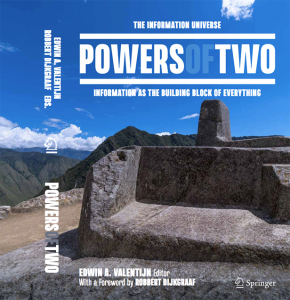
This book is in many ways a vastly extended version of Shannon’s one-page blueprint. It carries us all the way to the total information content of the Universe. And it bears testimony of how widespread the use of data has become in all aspects of life. Information is the connective tissue of the modern sciences. From its more obvious role in computer science and data-intensive disciplines like climate science and astrophysics, it has now also infiltrated biology, regarding life as the ultimate information processing machine. Even in my own discipline, the search of the fundamental laws of nature, quantum information seems at this moment the best candidate for the elementary building block out of which everything can be construed — matter, radiation, gravity, and even space and time itself. One of the great scientific paradoxes, the black hole, is from an information perspective both the most simple and complex object of nature. In gravity, it is literally nothing more than a hole in space, but in quantum theory it is the most efficient storage device that nature has available. All the data on the internet could easily fit into a black hole much smaller than the known particles.
Will the information paradigm last? Although science aims to be a universal language, the metaphors and images that scientists use are very much a sign of the times. It is no coincidence that the pioneers of the scientific revolution in the seventeenth century described the universe as a gigantic clockwork, just as these timekeeping machines became part of everyday experience. Similarly, at the height of the industrial revolution the human body was imagined as a huge factory with its pipes, valves and turbines, including the brain as management at the top floor.
Undoubtedly, future generations will look back at this time, so much enthralled by Big Data and quantum computers, as beholden to the information metaphor. But that is exactly the value of this book. Within its crisp descriptions and evocative illustrations, it brings the reader into the here and now, at the very frontier of scientific research, including the excitement and promise of all the outstanding questions and future discoveries. Onwards and upwards to the next metaphor!
— Pofessor Robbert Dijkgraaf